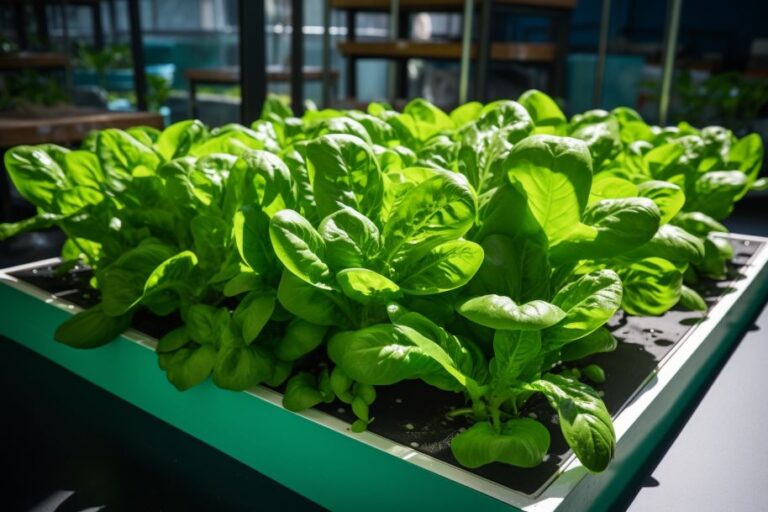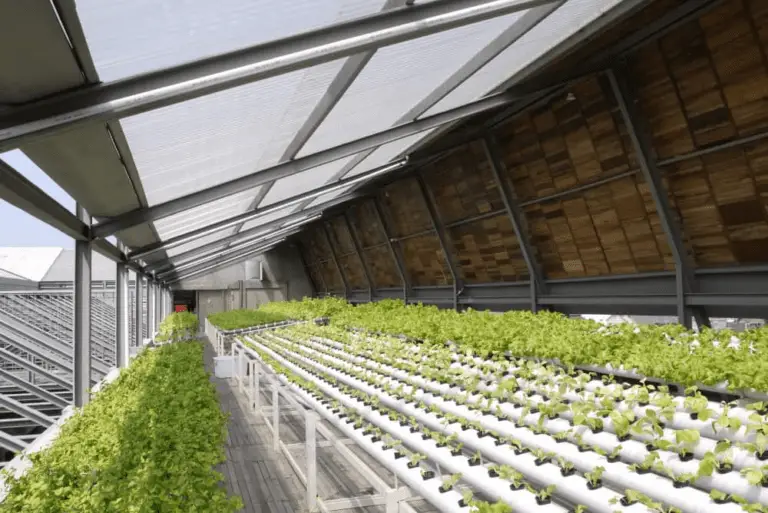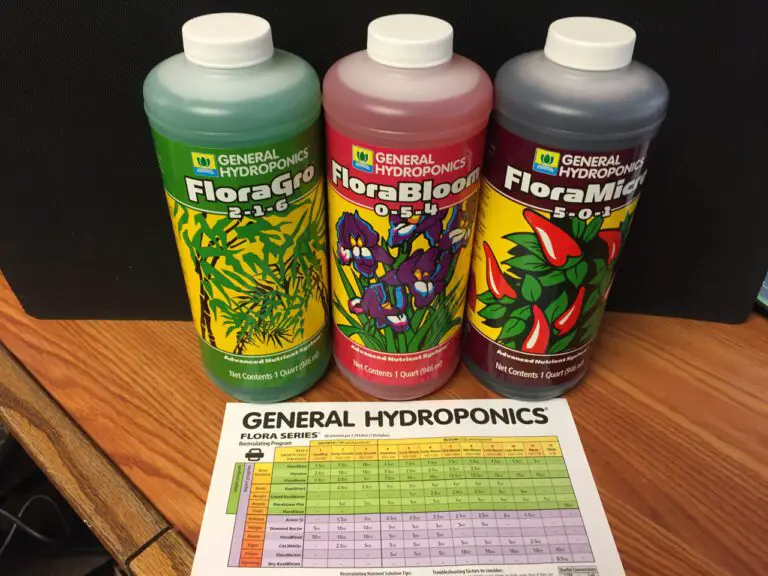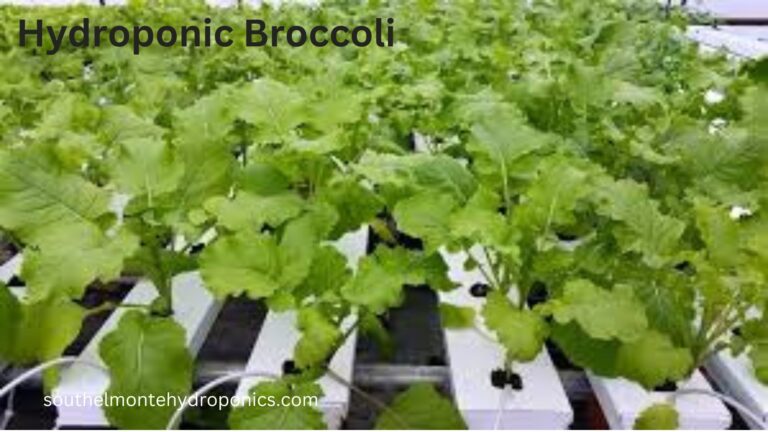How to Grow Hydroponic Potatoes in Your Home
Table of Contents
Want to grow your own hydroponic potatoes right in the heart of your home? From soil-free spuds to space-saving solutions, this guide dives into the art of cultivating delicious potatoes using innovative hydroponic techniques. Let’s dig into the future of home gardening together, blending simplicity, sustainability, and the joy of harvesting your very own homegrown potatoes!
Selecting the Right Potato Varieties for Hydroponics
When it comes to selecting the right potato varieties for hydroponics, there are a few key factors to consider. Firstly, it’s important to choose varieties that are well-suited for hydroponic growing conditions. These varieties should exhibit traits such as compact growth, disease resistance, and high yield potential. Some popular choices for hydroponic potatoes include Yukon Gold, Red Norland, and Fingerling varieties. The below table will guide you about different varieties of hydroponic potatoes and their growing conditions:
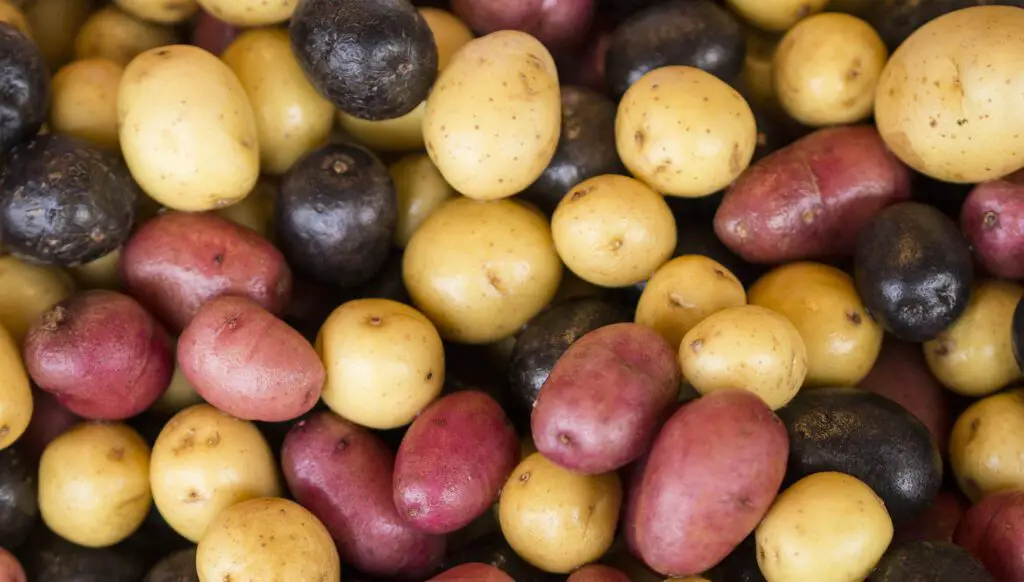
| Variety | Suitable Conditions | Growth Requirements | Ease of Cultivation | Yield |
|---|---|---|---|---|
| Yukon Gold | Moderate to warm temperatures; well-oxygenated water; pH of 6.0 | Medium to large grow bed; perlite, peat, or vermiculite as growing medium; 6 to 12 hours of light | Easy to moderate; resistant to some diseases and pests; prone to scab and blight | High; produces large and smooth tubers with yellow flesh |
| Red Pontiac | Moderate to warm temperatures; well-oxygenated water; pH of 6.0 | Medium to large grow bed; perlite, peat, or vermiculite as growing medium; 6 to 12 hours of light | Easy to moderate; resistant to some diseases and pests; prone to scab and blight | High; produces round and red tubers with white flesh |
| Fingerling | Moderate to warm temperatures; well-oxygenated water; pH of 6.0 | Medium to large grow bed; perlite, peat, or vermiculite as growing medium; 6 to 12 hours of light | Moderate to difficult; susceptible to some diseases and pests; sensitive to environmental stress | Moderate to low; produces small and elongated tubers with various colors of flesh |
| Kennebec | Moderate to warm temperatures; well-oxygenated water; pH of 6.0 | Medium to large grow bed; perlite, peat, or vermiculite as growing medium; 6 to 12 hours of light | Easy to moderate; resistant to some diseases and pests; prone to scab and blight | High; produces large and oval tubers with white flesh |
| Rio Grande | Warm to hot temperatures; well-oxygenated water; pH of 6.0 | Medium to large grow bed; perlite, peat, or vermiculite as growing medium; 6 to 12 hours of light | Easy to moderate; resistant to some diseases and pests; prone to scab and blight | High; produces oblong and russet tubers with white flesh |
In addition to considering the suitability of the potato varieties for hydroponics, it’s also important to keep in mind the specific goals and preferences of the gardener. Different varieties may have distinct flavor profiles, textures, and cooking qualities, so it’s worth researching and selecting varieties that align with your desired outcome. For instance, if you prefer a creamy texture and rich flavor, varieties like Yukon Gold or Butterfinger might be a good choice. On the other hand, if you’re looking for a crispy texture or unique appearance, Fingerling or Purple Majesty potatoes might be more suitable. Ultimately, selecting the right potato varieties for hydroponics involves striking a balance between practical considerations and personal preferences.
Creating the Ideal Growing Environment for Hydroponic Potatoes
Creating the ideal growing environment is crucial for successful hydroponic potato cultivation. By providing the right conditions, you can optimize growth, ensure high yields, and minimize the risk of disease or pest infestations. There are several key factors to consider when designing the growing environment for hydroponic potatoes.
First and foremost, lighting plays a vital role in the growth of hydroponic potatoes. These plants require ample light to carry out photosynthesis efficiently. LED grow lights are commonly used in hydroponic systems as they provide the specific light spectrum needed for optimal plant growth. When setting up your lighting system, it is important to position the lights at an appropriate distance from the plants to avoid heat-related damage.
Next, maintaining the right temperature is essential for the health of hydroponic potatoes. These plants thrive in temperatures between 60°F and 80°F (15°C to 27°C). Fluctuations in temperature can stress the plants and lead to reduced yields. To ensure a stable temperature, consider using a thermostat-controlled climate system within your hydroponic setup. This will help maintain a consistent temperature throughout the growing area.
In addition to lighting and temperature, humidity levels should also be monitored closely. High humidity can increase the risk of fungal diseases, while low humidity can lead to water loss through transpiration. Aim for a humidity range of 50% to 60% for hydroponic potatoes, as this is conducive to their growth and helps prevent disease development.
Lastly, proper ventilation is crucial to maintain a healthy growing environment. Good airflow helps prevent the buildup of excess moisture, which can lead to mold and fungal issues. Use fans or install an exhaust system to ensure adequate air circulation within your hydroponic setup.
By carefully controlling and optimizing these factors – lighting, temperature, humidity, and ventilation – you can create an ideal growing environment for hydroponic potatoes. This will pave the way for healthy, robust plants and bountiful harvests.
Choosing the Right Hydroponic System for Potatoes
Choosing the right hydroponic system for potatoes is crucial for the success of your potato garden. There are several factors to consider when selecting the appropriate system that will ensure optimal growth and yield. Firstly, you need to determine the space available for your hydroponic setup. If you have limited space, vertical systems such as tower gardens or vertical NFT (Nutrient Film Technique) systems are ideal as they maximize the use of vertical space. On the other hand, if you have ample space, you may opt for larger systems such as DWC (Deep Water Culture) or Ebb and Flow systems, which provide a larger growing area.
Another factor to consider is the level of control you desire over the nutrient solution and environmental conditions. If you prefer a hands-on approach and want to have precise control over every aspect of the growth process, a recirculating system like a NFT or DWC system would be suitable. These systems allow you to monitor and adjust the nutrient solution composition, pH levels, and temperature more easily. Alternatively, if you prefer a simpler and less labor-intensive setup, a non-recirculating system like the wick or drip irrigation system can be a suitable choice.
Regardless of the system you choose, it is essential to ensure that it provides proper support for the potatoes. Since potatoes develop underground, you need a system that allows for adequate root space and support. Some hydroponic systems, such as vertical tower gardens, may require additional modifications to include supports for the growing potato plants.
In conclusion, selecting the right hydroponic system for potatoes involves considering the available space, desired level of control, and the system’s ability to support the plants. By understanding these factors and assessing your individual needs and constraints, you can choose a suitable system that will promote healthy growth and abundant yield for your hydroponic potato garden.
Sourcing Quality Potato Seeds or Tubers for Hydroponics
When it comes to sourcing quality potato seeds or tubers for hydroponics, it is important to select varieties that are optimal for this growing method. Not all potato varieties are suitable for hydroponics, as some may not adapt well to the soilless environment. It is recommended to choose varieties that have been specifically bred or recommended for hydroponic cultivation. These varieties are often known for their disease resistance, high yield potential, and adaptability to controlled environments.

One reliable source for purchasing quality potato seeds or tubers for hydroponics is through reputable seed companies or nurseries. These companies typically offer a wide selection of hydroponic-friendly potato varieties, ensuring that you have access to the best options available. Additionally, these companies often provide detailed information about each variety, including its growth characteristics, disease resistance, and recommended growing conditions, which can help you make informed decisions for your hydroponic potato garden.
Another option for sourcing quality potato seeds or tubers for hydroponics is to join online communities or forums dedicated to hydroponic gardening. Here, you can connect with experienced hydroponic gardeners who may have valuable insights or recommendations on where to find reliable sources of potato seeds or tubers specifically for hydroponics. These communities are often passionate about sharing knowledge and resources, making it a great platform to network and learn from fellow enthusiasts.
Preparing the Potatoes for Hydroponic Planting
To prepare the potatoes for hydroponic planting, it is important to start with high-quality potato seeds or tubers. Select disease-free and certified potato seeds or tubers from reputable sources. This ensures the health and vigor of your hydroponic potato crop from the very beginning.
Before planting, it is recommended to treat the potato seeds or tubers with a mild fungicide to prevent fungal diseases. This is especially crucial when using recycled or reused growing media in your hydroponic system. By taking this precautionary step, you can minimize the risk of diseases spreading and affecting your potato plants.
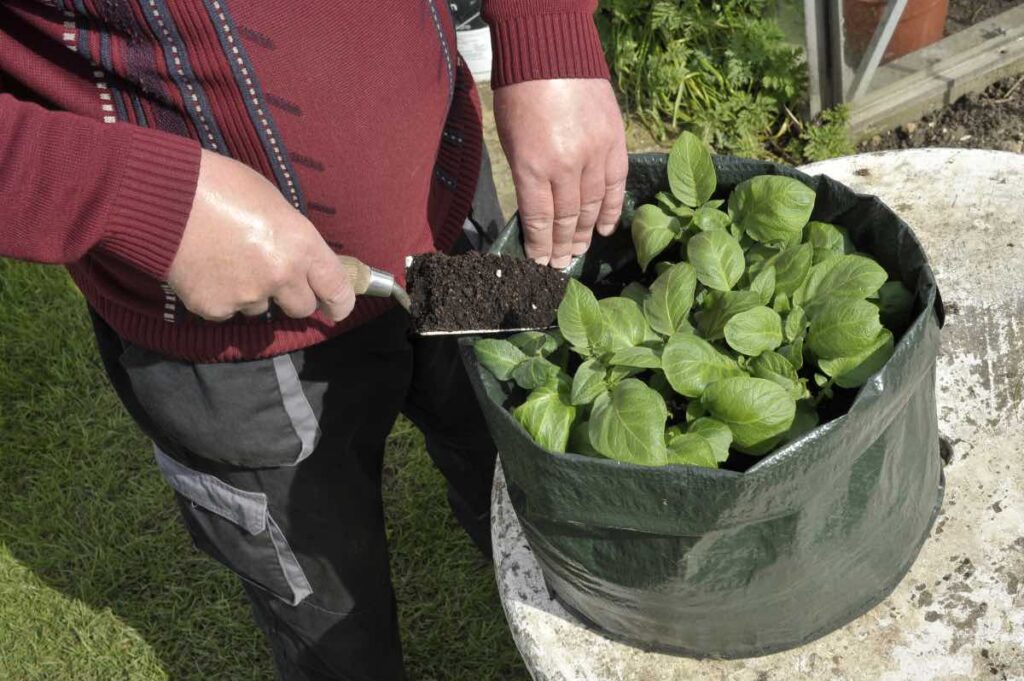
Additionally, it is beneficial to pre-sprout the potato seeds or tubers prior to planting. This involves placing them in a warm, well-lit location for a couple of weeks until sprouts emerge. Pre-sprouting helps to kick-start the growth of potato plants and enhances the overall productivity of your hydroponic garden.
By following these preparations, you can ensure that your hydroponic potato plants have a healthy and successful start, setting the stage for optimal growth and abundant yields.
Planting Techniques for Hydroponic Potatoes
When it comes to planting potatoes in a hydroponic system, there are a few key techniques to keep in mind. First and foremost, it is essential to choose high-quality seed potatoes or tubers. These should be disease-free and preferably certified for hydroponic cultivation. The potato variety you select should also be well-suited for hydroponics, as certain varieties perform better than others in soilless growing systems.
Once you have your seed potatoes, it’s time to prepare them for planting. Start by cutting the tubers into sections, making sure each piece has at least one eye or sprout. This encourages the growth of new potato plants. Afterward, allow the cut pieces to dry out for a day or two. This helps prevent rotting and ensures better germination rates. When it comes to planting these potato sections, spacing is crucial. Place them about 6 to 8 inches apart in your hydroponic system, making sure the sprout or eye is facing upward. This ensures proper growth and allows each plant to receive the necessary light and nutrients for optimal development.
Providing Optimal Nutrient Solutions for Hydroponic Potatoes
When it comes to providing optimal nutrient solutions for hydroponic potatoes, it is crucial to strike the right balance that will support their growth and enhance their yield. Potatoes are heavy feeders and require a carefully formulated nutrient solution to meet their specific nutritional needs throughout their growth cycle.

One of the key considerations in providing optimal nutrient solutions for hydroponic potatoes is the selection of the right proportions of essential elements such as nitrogen, phosphorus, and potassium (NPK). These macronutrients play a vital role in the overall development of the plants, including root growth, leaf formation, and tuber production. Additionally, secondary nutrients like calcium, magnesium, and sulfur, as well as micronutrients like iron, manganese, and zinc, must also be included in the nutrient solution to ensure a well-rounded and balanced nutritional profile for the potatoes.
Creating a nutrient solution tailored to the specific needs of hydroponic potatoes can be achieved through careful monitoring and adjustment. Regular testing of the nutrient solution’s pH levels and electrical conductivity (EC) is essential to maintain optimal nutrient uptake by the plants. pH levels should ideally be maintained within the range of 5.5 to 6.5, as this provides an environment where nutrients are readily available for absorption. Moreover, the EC of the nutrient solution should be regularly monitored to ensure that it is within the range suitable for potato growth, typically between 1.8 to 2.5 mS/cm.
Maintaining Proper Lighting and Temperature for Growth
Maintaining proper lighting and temperature is crucial for the healthy growth of hydroponic potatoes. Light is an essential factor for photosynthesis, the process by which plants convert light energy into chemical energy, ultimately fueling their growth. When growing potatoes hydroponically, it is important to provide them with the right amount and quality of light.
Potatoes thrive best under full spectrum lighting, which closely resembles natural sunlight. LED grow lights are an excellent choice for providing the ideal light spectrum for potato growth. These lights can be adjusted to emit the specific wavelengths that promote photosynthesis and enhance the potato plant’s development. It is recommended to provide the potatoes with 14-16 hours of light per day during their vegetative growth stage and reduce it to 12 hours during their flowering stage. By ensuring consistent and appropriate lighting, gardeners can optimize potato yield and quality in their hydroponic systems.
Temperature control is another crucial aspect of maintaining optimal conditions for hydroponic potato growth. Potatoes prefer relatively cool temperatures, with an ideal range of 60-75°F (15-24°C) during the day and slightly lower temperatures at night. High temperatures can adversely affect potato growth, leading to reduced yields and quality.
To regulate the temperature in your hydroponic system, it is recommended to use a ventilation system or fans to provide fresh air and prevent overheating. Additionally, monitoring the ambient temperature surrounding the plants is essential, as extreme fluctuations can stress the potatoes and hinder their development. By ensuring the correct temperature range, gardeners can create a favorable environment for their hydroponic potatoes, allowing them to thrive and achieve their full potential.
Monitoring and Adjusting pH Levels in Hydroponic Potato Systems
Maintaining the proper pH levels is crucial for the successful growth of hydroponic potatoes. pH refers to the acidity or alkalinity of the nutrient solution in which the plants are grown. Potatoes thrive in a slightly acidic environment with a pH range of 5.8 to 6.2, as this allows optimum nutrient uptake.
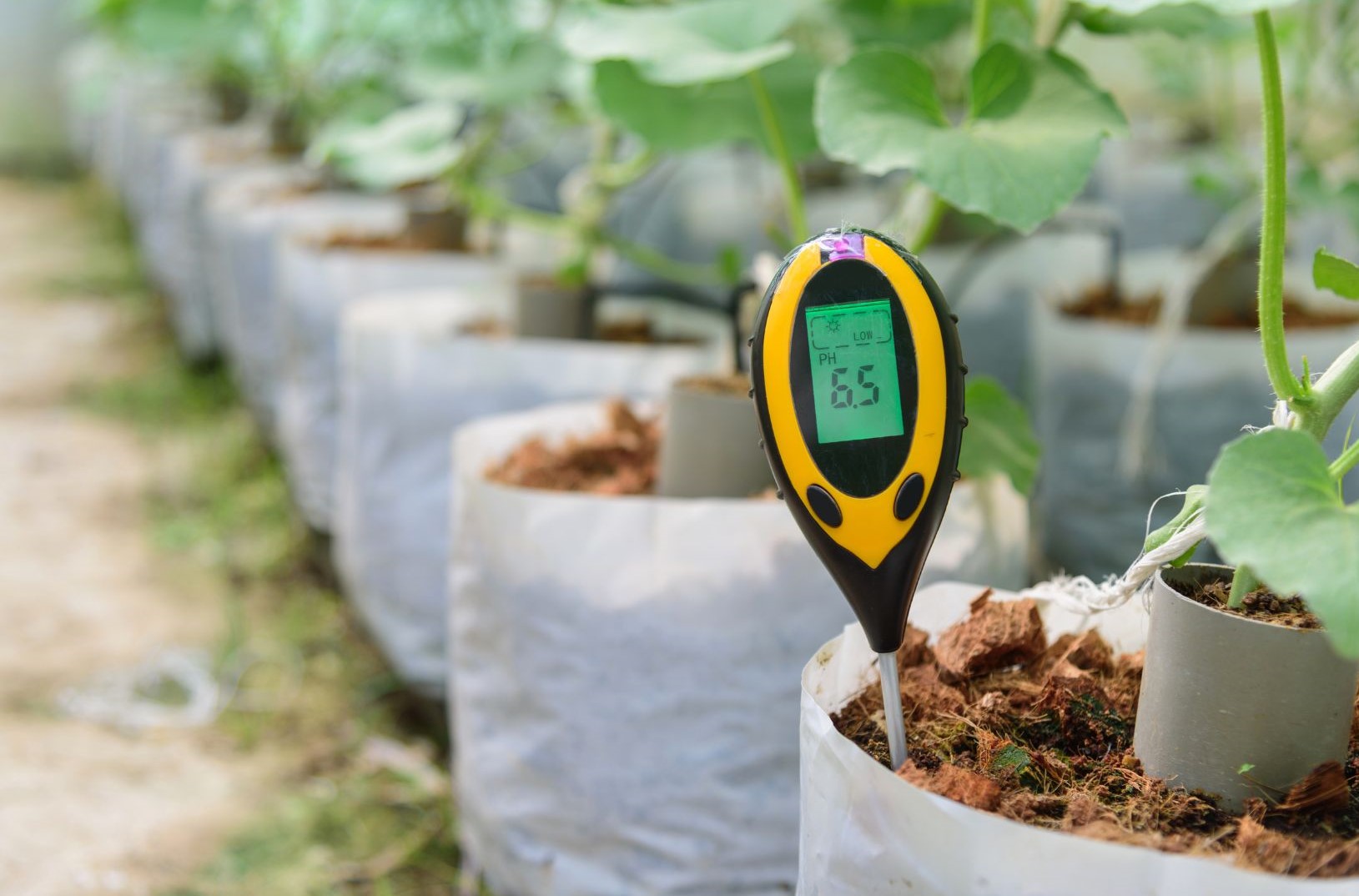
Regular monitoring of pH levels is necessary to ensure that they remain within the desired range. This can be easily done using a pH meter or test kit specifically designed for hydroponic systems. Ideally, pH should be checked daily or at least a few times a week. If the pH deviates from the desired range, adjustments need to be made to bring it back to the optimal level. Adding acid to lower pH or alkaline substances to raise pH can help maintain the right balance. It’s important to follow the manufacturer’s instructions and make gradual adjustments to avoid sudden pH swings that could shock the plants.
Maintaining the correct pH levels not only affects nutrient absorption but also plays a crucial role in preventing nutrient deficiencies or toxicities. When pH is too high or too low, certain elements may become less available or even unavailable to the plants, leading to stunted growth, yellowing leaves, and reduced yields. By regularly monitoring and adjusting pH levels in hydroponic potato systems, gardeners can ensure that their plants receive the optimal nutrient uptake and achieve healthy growth.
Managing Pests and Diseases in Hydroponic Potato Gardens
As with any type of gardening, managing pests and diseases is an essential aspect of hydroponic potato gardening. By implementing proper prevention and control measures, you can minimize the risk of damage to your crop and ensure healthy, productive plants.
One common pest that affects potato plants is the Colorado potato beetle (Leptinotarsa decemlineata). These insects can quickly defoliate your plants, leading to reduced yields. To prevent infestations, regularly inspect your plants for the presence of beetles and their larvae. If you notice any, manually remove them and squash them to prevent further damage. Additionally, removing plant debris and weeds from your growing area can help reduce the beetle population.
Other pests that can be problematic in hydroponic potato gardens include aphids, thrips, and spider mites. These pests can weaken plants and transmit diseases. To control them, introduce beneficial insects such as ladybugs or lacewings that feed on these pests. Alternatively, you can use organic insecticidal soaps or neem oil, following manufacturer instructions carefully.
Here is a table with some common diseases and pests in hydroponic potatoes, along with their causes, symptoms and treatments:
| Disease/Pest | Cause | Symptom | Treatment |
|---|---|---|---|
| Aphids | Small insects that suck plant sap | Yellowing, curling and wilting of leaves; sticky honeydew on leaves and stems | Spray with insecticidal soap, neem oil or pyrethrin; introduce natural predators like ladybugs or lacewings |
| Whiteflies | Small white flies that feed on plant sap | Yellowing and dropping of leaves; whiteflies on the underside of leaves; sticky honeydew and sooty mold on leaves | Spray with insecticidal soap, neem oil or pyrethrin; use yellow sticky traps; introduce natural predators like lacewings or parasitic wasps |
| Spider mites | Tiny arachnids that feed on plant sap | Fine webbing on leaves and stems; speckled, yellow or brown leaves; stunted growth | Spray with insecticidal soap, neem oil or pyrethrin; increase humidity and air circulation; introduce natural predators like predatory mites or ladybugs |
| Thrips | Small winged insects that feed on plant sap and pollen | Silver or brown spots on leaves; distorted or curled leaves; black fecal spots on leaves | Spray with insecticidal soap, neem oil or pyrethrin; use blue sticky traps; introduce natural predators like lacewings or predatory bugs |
| Fungus gnats | Small black flies that lay eggs in the growing medium | Larvae feed on roots and root hairs; reduced plant vigor; wilting and yellowing of leaves | Use sterile and well-drained growing medium; avoid overwatering; use yellow sticky traps; apply Bacillus thuringiensis var. israelensis or nematodes to the medium |
| Late blight | Fungal disease that spreads through spores | Brown or black spots on leaves and stems; white fuzzy growth on the underside of leaves; brown or black lesions on tubers | Use disease-free seed potatoes; avoid overhead watering; remove and destroy infected plants; apply copper-based fungicides |
| Early blight | Fungal disease that spreads through spores | Brown or black spots with concentric rings on leaves and stems; yellowing and dropping of leaves; sunken spots on tubers | Use disease-free seed potatoes; avoid overhead watering; remove and destroy infected plants; apply copper-based fungicides |
| Verticillium wilt | Fungal disease that infects the vascular system | Yellowing and wilting of lower leaves; browning of vascular tissue; stunted growth and reduced yield | Use disease-free seed potatoes; rotate crops with non-susceptible plants; remove and destroy infected plants; apply biocontrol agents like Trichoderma or Gliocladium |
When it comes to diseases, one of the most common in potato plants is late blight (Phytophthora infestans). This fungal disease can quickly devastate your entire crop if left unchecked. To prevent late blight, select disease-resistant potato varieties and practice good hygiene in your hydroponic system. Regularly sanitize equipment and remove any infected plant material. If you notice the symptoms of late blight, such as dark lesions on leaves and stems, it’s crucial to remove and destroy the affected plants immediately to prevent the spread of the disease.
Here are some more diseases and pests in hydroponic potatoes, along with their causes, symptoms and treatments:
| Disease/Pest | Cause | Symptom | Treatment |
|---|---|---|---|
| Root rot | Fungal or bacterial infection of the roots | Brown or black roots; soft and mushy texture; foul odor; wilting and yellowing of leaves; reduced growth and yield | Use sterile and well-oxygenated water; avoid overwatering; remove and destroy infected plants; apply biocontrol agents like Trichoderma or Gliocladium1 |
| Powdery mildew | Fungal disease that forms a white coating on leaves and stems | White or gray powdery patches on leaves and stems; reduced photosynthesis; distorted or curled leaves; stunted growth | Use disease-free seed potatoes; avoid high humidity and low air circulation; remove and destroy infected plants; apply sulfur-based or biological fungicides |
| Leaf spot | Fungal or bacterial disease that causes spots on leaves | Small to large spots on leaves; spots may be brown, black, yellow, or red; spots may have a halo or a margin; spots may coalesce and form lesions; premature leaf drop | Use disease-free seed potatoes; avoid overhead watering and splashing; remove and destroy infected plants; apply copper-based or biological fungicides |
| Potato scab | Bacterial disease that affects the skin of tubers | Rough, corky, or scabby patches on tubers; patches may be brown, gray, or black; patches may be superficial or deep; reduced quality and marketability of tubers | Use disease-free seed potatoes; maintain a pH of 5.2 to 5.8; avoid high calcium levels in water; apply biocontrol agents like Bacillus subtilis or Streptomyces scabies |
| Wireworms | Larvae of click beetles that feed on roots and tubers | Holes or tunnels in roots and tubers; reduced plant vigor; wilting and yellowing of leaves; reduced yield and quality of tubers | Use disease-free and certified seed potatoes; avoid using organic matter as a growing medium; use yellow sticky traps; apply beneficial nematodes or diatomaceous earth to the medium |
Here are some more diseases and pests in hydroponic potatoes, along with their causes, symptoms and treatments:
| Disease/Pest | Cause | Symptom | Treatment |
|---|---|---|---|
| Bacterial wilt | Bacterial infection of the vascular system | Wilting and yellowing of leaves; browning of vascular tissue; oozing of bacterial slime from cut stems | Use disease-free seed potatoes; avoid wounding the plants; remove and destroy infected plants; apply biocontrol agents like Bacillus subtilis or Pseudomonas fluorescens1 |
| Blackleg | Bacterial infection of the stem base and roots | Blackening and rotting of the stem base and roots; wilting and yellowing of leaves; soft and wet rot of tubers | Use disease-free seed potatoes; avoid high humidity and low temperature; remove and destroy infected plants; apply biocontrol agents like Bacillus subtilis or Pseudomonas fluorescens1 |
| Potato cyst nematodes | Microscopic roundworms that feed on roots | Stunted growth and reduced yield; yellowing and wilting of leaves; formation of cysts on roots | Use disease-free and certified seed potatoes; avoid using organic matter as a growing medium; use resistant varieties; apply beneficial nematodes or marigold extract to the medium |
| Potato leafroll virus | Viral disease transmitted by aphids | Rolling and curling of leaves; yellowing of leaf margins; stunted growth and reduced yield; accumulation of starch in tubers | Use disease-free and certified seed potatoes; control aphids with insecticidal soap, neem oil or pyrethrin; use resistant varieties; remove and destroy infected plants |
| Potato virus Y | Viral disease transmitted by aphids | Mosaic, mottling or necrosis of leaves; stunted growth and reduced yield; deformation or cracking of tubers | Use disease-free and certified seed potatoes; control aphids with insecticidal soap, neem oil or pyrethrin; use resistant varieties; remove and destroy infected plants |
By staying vigilant and implementing these preventative measures, you can effectively manage pests and diseases in your hydroponic potato garden, ensuring a healthy and abundant crop.
Harvesting and Storing Hydroponically Grown Potatoes
Harvesting hydroponically grown potatoes is an exciting moment for any gardener. Potatoes are ready to harvest when the plants have reached their full growth and the foliage begins to yellow and die back. Gently dig around the base of the plants to expose the tubers. Use your hands or a small garden fork to carefully lift the potatoes out of the growing medium. Be cautious not to damage the delicate tubers during the harvesting process.
Once you have harvested your hydroponic potatoes, it is crucial to store them in the right conditions to maintain their quality and extend their shelf life. Store the potatoes in a cool, dark, and well-ventilated area with a temperature range of 45 to 50 degrees Fahrenheit (7 to 10 degrees Celsius). Avoid exposure to direct sunlight as it can cause the potatoes to turn green and develop a bitter taste. Additionally, keep the potatoes away from other fruits and vegetables, as certain produce items can release ethylene gas, which may accelerate spoilage. When stored properly, hydroponically grown potatoes can last for several weeks, allowing you to savor the fresh taste of your harvest for an extended period.
Note: This list provides a comprehensive guide to growing hydroponic potatoes in a home setting, covering various aspects from selecting the right potato varieties to harvesting and storage.
Growing hydroponic potatoes in a home setting requires careful consideration of various aspects, from selecting the right potato varieties to ensuring proper storage after harvesting. By following a comprehensive guide, you can maximize your chances of success and enjoy a bountiful harvest.
One crucial factor to consider is selecting the right potato varieties for hydroponic cultivation. Different potato varieties exhibit varying growth characteristics, such as growth rate, yield, and resistance to diseases. It is important to choose varieties that are well-suited for hydroponic systems, as they need to thrive in soilless conditions. Some popular varieties for hydroponics include Yukon Gold, Red Pontiac, and Kennebec, which have proven to perform well in these controlled environments. Considering the available space, desired taste, and personal preferences, you can select the varieties that align with your gardening goals.
Another essential aspect is creating the ideal growing environment for hydroponic potatoes. Maintaining ambient temperatures between 60-70°F (15-21°C) encourages optimal growth. Adequate lighting is also crucial, as potatoes require a minimum of 12-14 hours of light per day for proper development. Utilizing full-spectrum LED grow lights can provide the necessary light intensity and spectra for plant growth. Additionally, ensuring proper ventilation is essential to prevent heat build-up and encourage healthy airflow around the plants. By focusing on these environmental factors, you can provide a suitable growing environment for your hydroponic potato crop, leading to healthier plants and higher yields.
For further details watch this video:
Can I use any potato variety for hydroponic potato growing?
No, not all potato varieties are suitable for hydroponic growing. It is important to select potato varieties that have been specifically bred for hydroponic systems, as they have better adaptability to this growing method.
What is the ideal pH level for hydroponic potato systems?
The ideal pH level for hydroponic potato systems is between 5.8 and 6.2. It is important to monitor and adjust the pH levels regularly to ensure optimal nutrient uptake by the plants.
How often should I check the nutrient solution for hydroponic potatoes?
It is recommended to check the nutrient solution for hydroponic potatoes at least once a week. This will allow you to monitor nutrient levels and make any necessary adjustments to ensure the plants are receiving the proper nutrients.
What are some common pests and diseases that affect hydroponic potato gardens?
Common pests that affect hydroponic potato gardens include aphids, spider mites, and whiteflies. Diseases such as late blight and powdery mildew can also be a concern. It is important to regularly inspect the plants and take appropriate measures to prevent and manage pest and disease infestations.
How long can hydroponically grown potatoes be stored?
Hydroponically grown potatoes can be stored for several months if proper storage conditions are maintained. Ideally, store them in a cool and dark place with a temperature of around 45-50°F (7-10°C) and moderate humidity levels.
Can I reuse the nutrient solution for hydroponic potatoes?
Reusing the nutrient solution for hydroponic potatoes is not recommended. Over time, the nutrient levels in the solution can become imbalanced and may not provide the necessary nutrients for optimal plant growth. It is best to replace the nutrient solution with fresh solution for each growing cycle.
Can I grow hydroponic potatoes outdoors?
Yes, hydroponic potatoes can be grown outdoors as long as you have a suitable hydroponic system and provide the necessary growing conditions. However, it is important to consider factors such as temperature, sunlight exposure, and protection from pests and diseases.
Can I grow hydroponic potatoes without artificial lighting?
While hydroponic potatoes can benefit from artificial lighting, they can also be grown using natural sunlight. However, it is important to ensure that the plants receive sufficient light for at least 12-16 hours a day to support their growth and development.

Pallavi Gupta is a burgeoning writer at SouthElMonteHydroponics, blending her passion for data analysis with a keen interest in biotechnology. Currently pursuing a Bachelor’s in Biotechnology at Amity University, Pallavi delves into the intricacies of life sciences while gaining hands-on experience in the exciting world of data analysis. Her unique background provides a fresh perspective on hydroponic farming, as she explores the intersection of biotechnology and sustainable agriculture. Through her writing, Pallavi aims to bridge the gap between data-driven insights and innovative farming practices, inspiring others to harness technology for a greener future.




